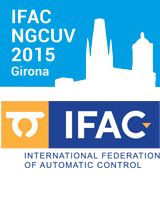
Comments: download pdf.
Ref.: IFAC Workshop on Navigation, Guidance and Control of Underwater Vehicles, Girona (España),
April 2015.
Abstract:
The WiMUST (Widely scalable Mobile Underwater Sonar Technology) project
aims at expanding and improving the functionalities of current cooperative marine robotic
systems, effectively enabling distributed acoustic array technologies for geophysical surveying
with a view to exploration and geotechnical applications. Recent developments have shown
that there is vast potential for groups of marine robots acting in cooperation to drastically
improve the methods available for ocean exploration and exploitation. Traditionally, seismic
reflection surveying is performed by vessel towed streamers of hydrophones acquiring reflected
acoustic signals generated by acoustic sources (either towed or onboard a vessel). In this context,
geotechnical surveying for civil and commercial applications (e.g., underwater construction,
infrastructure monitoring, mapping for natural hazard assessment, environmental mapping,
etc.) aims at seafloor and sub-bottom characterization using towed streamers of fixed length
that are extremely cumbersome to operate. The vision underlying the WiMUST project is
that of developing advanced cooperative and networked control / navigation systems to enable
a large number (tens) of marine robots (both on the surface and submerged) to interact by
sharing information as a coordinated team (not only in pairs). The WiMUST system may be
envisioned as an adaptive variable geometry acoustic array.